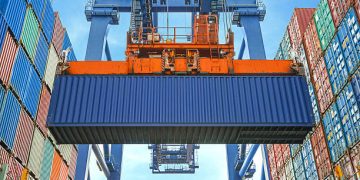The United States has doubled tariffs on imports from India to as much as 50%, a move that took effect on Wednesday and is expected to weigh on bilateral trade and exporters in Asia’s third-largest economy.
The additional 25% levy applies to a wide range of goods including garments, gems and jewellery, footwear, sporting goods, furniture, and chemicals. Analysts warn the measure could affect thousands of small exporters and jobs in India, potentially slowing growth in the world’s fifth-largest economy.
Impact on Trade and Markets
India had engaged in five rounds of trade talks with Washington aimed at reducing tariffs to around 15%, similar to agreements the US reached with Japan, South Korea, and the European Union. However, the discussions ended without a deal, with both sides citing missteps and missed opportunities.
On Tuesday, ahead of the tariff implementation, Indian equity markets fell sharply, posting their steepest decline in three months. The Indian rupee also weakened for a fifth consecutive session, closing at its lowest level in three weeks.
Government Response
India’s trade ministry did not immediately issue a formal statement. However, a government source said New Delhi hopes Washington will reconsider the additional 25% duty and confirmed that measures are being planned to support exporters.
Analysts suggest that while the higher tariffs will be disruptive, they may also encourage India to pursue further economic reforms and diversify trade opportunities.
Exemptions and Sector Impact
A notice from US Customs and Border Protection granted a three-week exemption for Indian goods that were already shipped before the deadline. Sectors such as steel, aluminum, copper, and passenger vehicles remain subject to separate tariffs under existing provisions.
According to Indian officials, the country’s average tariff on US imports is about 7.5%. In contrast, the US Trade Representative’s office has cited higher duties applied by India in certain sectors, including up to 100% on autos and an average of 39% on agricultural goods.
Broader Trade Outlook
Two-way goods trade between the US and India totaled $129 billion in 2024, with a US trade deficit of $45.8 billion, according to US Census Bureau data. Exporter groups estimate the tariff increase could affect nearly 55% of India’s $87 billion in merchandise exports to the US, reducing competitiveness against countries such as Vietnam, Bangladesh, and China.
Economists warn that up to 2 million jobs in India could be at risk, though robust domestic demand and a diversified export base may help cushion the impact. Sustained tariff levels at this scale could also challenge India’s growing role as an alternative manufacturing hub to China.
Despite the tariff dispute, officials from both countries emphasized their commitment to strengthening the broader bilateral relationship, with recent discussions between senior foreign and defense officials highlighting continued cooperation.
#TradePolicies #TariffsAndDuties #IndiaUSTrade #GlobalEconomy #SupplyChainNews

















